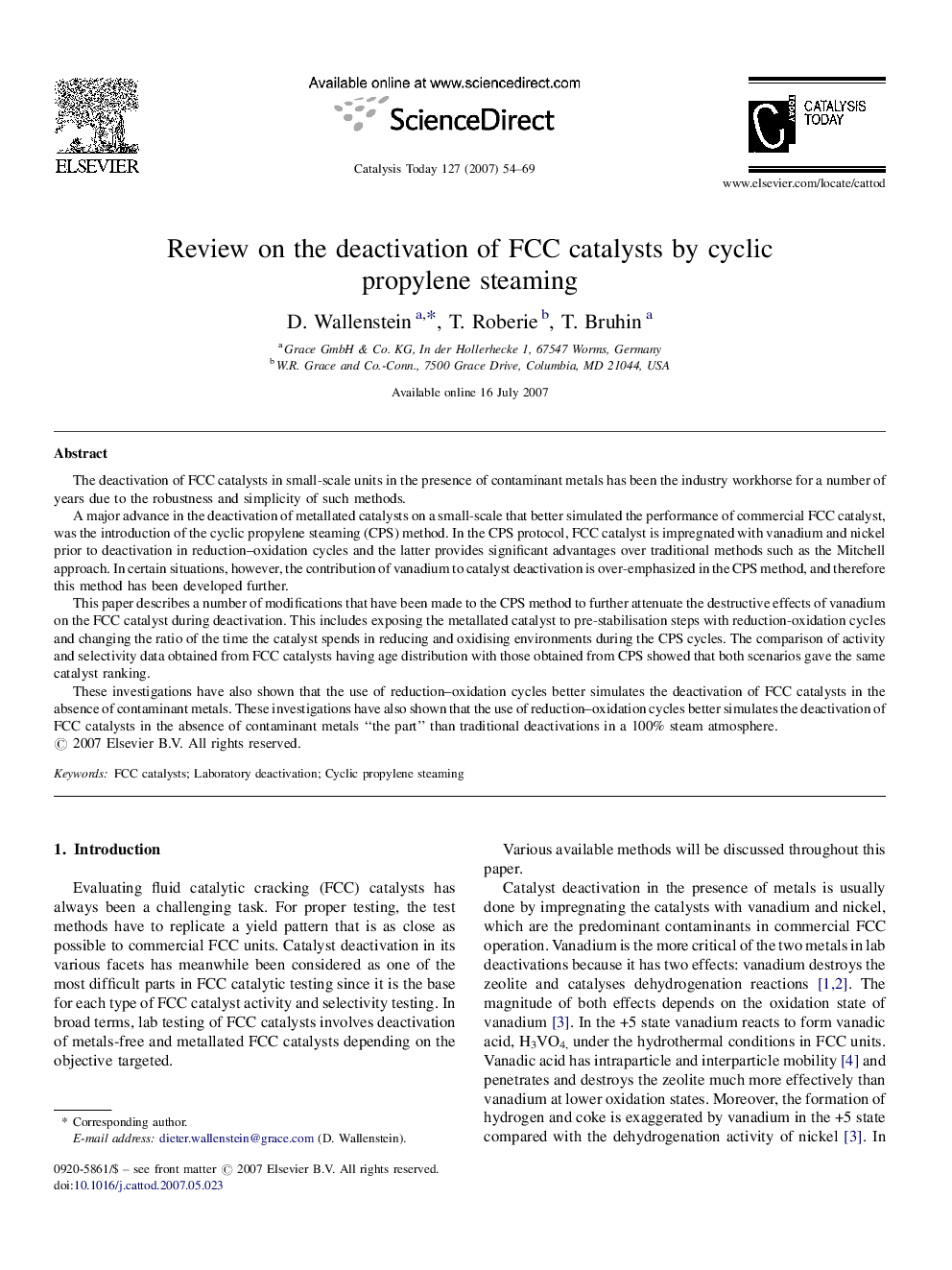| Article ID | Journal | Published Year | Pages | File Type |
|---|---|---|---|---|
| 58479 | Catalysis Today | 2007 | 16 Pages |
The deactivation of FCC catalysts in small-scale units in the presence of contaminant metals has been the industry workhorse for a number of years due to the robustness and simplicity of such methods.A major advance in the deactivation of metallated catalysts on a small-scale that better simulated the performance of commercial FCC catalyst, was the introduction of the cyclic propylene steaming (CPS) method. In the CPS protocol, FCC catalyst is impregnated with vanadium and nickel prior to deactivation in reduction–oxidation cycles and the latter provides significant advantages over traditional methods such as the Mitchell approach. In certain situations, however, the contribution of vanadium to catalyst deactivation is over-emphasized in the CPS method, and therefore this method has been developed further.This paper describes a number of modifications that have been made to the CPS method to further attenuate the destructive effects of vanadium on the FCC catalyst during deactivation. This includes exposing the metallated catalyst to pre-stabilisation steps with reduction-oxidation cycles and changing the ratio of the time the catalyst spends in reducing and oxidising environments during the CPS cycles. The comparison of activity and selectivity data obtained from FCC catalysts having age distribution with those obtained from CPS showed that both scenarios gave the same catalyst ranking.These investigations have also shown that the use of reduction–oxidation cycles better simulates the deactivation of FCC catalysts in the absence of contaminant metals. These investigations have also shown that the use of reduction–oxidation cycles better simulates the deactivation of FCC catalysts in the absence of contaminant metals “the part” than traditional deactivations in a 100% steam atmosphere.
